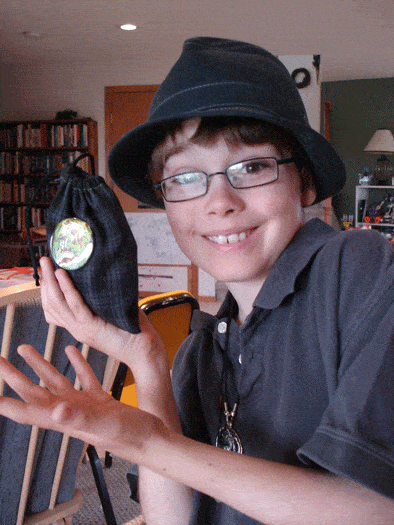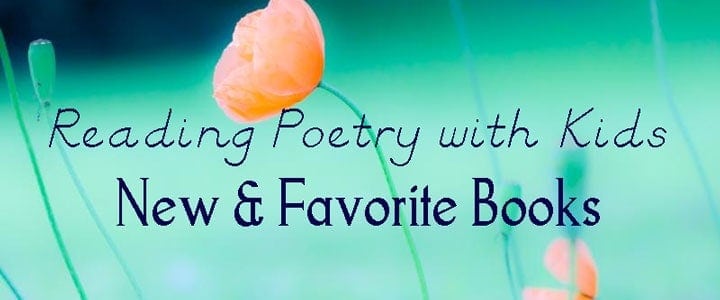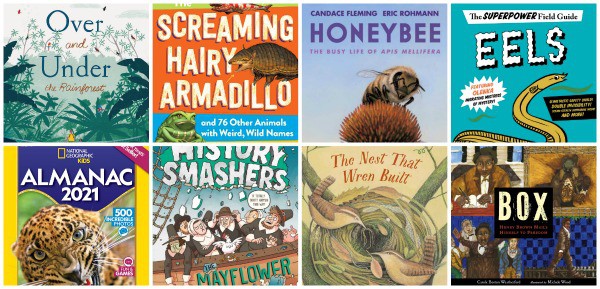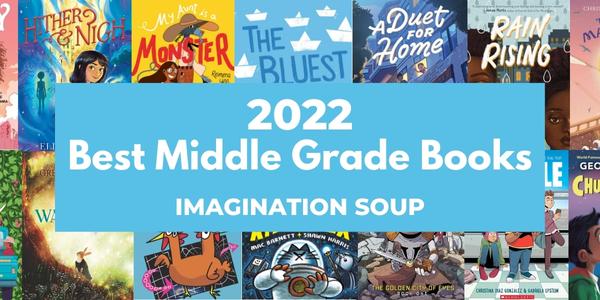Growing Leaders Through Creative Education
This post may contain affiliate links.
 Guest post by mom, librarian, and homeschooler, Gwyn Ridenhour on National Novel Writing Month for kids, game invention, and more.
Guest post by mom, librarian, and homeschooler, Gwyn Ridenhour on National Novel Writing Month for kids, game invention, and more.
Three years ago, my eight-year old son announced he would rather not go to public school. He had actually been announcing this since he was six. A bright boy, he found the public school scene stifling, boring, unengaging. We had tried many tactics to make school work for him, including having him grade-skip twice. But it wasn’t enough. Ian wanted to learn at his own rapid pace, and do it without textbooks and worksheets.
Now I am not trained as an educator, and the idea of homeschooling without a curriculum was frightening. Without following someone else’s structure, how was I to ensure he would learn everything he was “supposed” to? But clearly, the standard approaches weren’t working, so I had to back up and think about how to move forward in such a way that would renew his excitement about learning.
When Ian turned 9, we made this radical decision to homeschool; my equally bright daughter was 6, and determined not to miss out. So we made the plunge together.
I give this backstory to explain why I threw out all the educational standards we take for granted, including grades, textbooks, and the dreaded worksheets. We had to do things differently.
Though our schedule includes history, math, science, and literature, I am equally respectful of my children’s individual talents and interests, and actively weave them into their schoolwork. This individualization empowers the kids in a way that a grade never could. And it has created two pretty amazing leaders.
 Let’s start with Ian. Ian has two major loves of his life: music and trading cards. I could write an entire entry on his music, but you can learn more about that here.
Let’s start with Ian. Ian has two major loves of his life: music and trading cards. I could write an entire entry on his music, but you can learn more about that here.
What I want to talk about here is his trading card craze, which was banned from the classrooms at his public school. But where the school saw nuisance, Ian saw opportunity. Three years ago, he thought it would be fun to take his love of Pokémon and his interest in science and math and meld them into a new zoology based game. He poured over the details, musing that players would collect cards from different areas on the food chain and battle them out together, winning points for successfully attacking or defending. A fun childhood fantasy.
In the first year of homeschool, I let him pursue his idea for science class. We researched trading card structure, bought new games to compare, inspected the differences… basically, we lived every nine-year old boy’s dream. Ian chose his animals, researched their “stats,” and created a game structure that reflected their interaction in the wild. He now has a fantastic game called “Animal Attack.” He’s worked on this for two years now, entering it into several entrepreneurial contests, and presenting the idea to business leaders, teachers, and kids; he will have the game ready for market by the end of this year.
The academic benefits of allowing Ian to create his game include a deep understanding of zoology and the food chain and the development of research and computer design skills. And life skills? Business planning, budgeting, public speaking, prototype development and testing, and a sense that he is working to improve educational resources for kids like him all over the country. And he made an “awesomesauce” game. No textbook, worksheet, or grade could ever do that.
 And then there’s eight-year old Eva, who is my storyteller, narrating stories about her dolls ever since she could talk. When we started homeschooling, she was six. I signed her up for National Novel Writing Month to see if she could create a story from beginning to end. She and I worked together to make an outline, with me asking probing questions to encourage her forward. Then she dictated her story to me. After it was down, she read it out loud and made her own revisions. I fixed her spelling, but that was all; she did the rest. She illustrated it, and I packed it and sent it to a self-publishing website. In just a few weeks, Eva held her first self-authored picture book, and people could buy it! This is what she said that day: “Mom, I used to want to be a princess. But now I want to be an author!”
And then there’s eight-year old Eva, who is my storyteller, narrating stories about her dolls ever since she could talk. When we started homeschooling, she was six. I signed her up for National Novel Writing Month to see if she could create a story from beginning to end. She and I worked together to make an outline, with me asking probing questions to encourage her forward. Then she dictated her story to me. After it was down, she read it out loud and made her own revisions. I fixed her spelling, but that was all; she did the rest. She illustrated it, and I packed it and sent it to a self-publishing website. In just a few weeks, Eva held her first self-authored picture book, and people could buy it! This is what she said that day: “Mom, I used to want to be a princess. But now I want to be an author!”
The next year, she wrote a chapter book. She entered her authorship business into a kids’ entrepreneurial festival. We hosted a release party at our home. We created a website so that she could promote her work. And she went along on my husband’s first book tour, showcasing, selling, and signing. Not too bad for an eight-year old.
But she wanted to do more. She wants to change the world by inspiring other kids to write. So I helped her create a series of five 2-minute videos in which she talks about writing and encourages other kids. We co-wrote the script, but all the charm and poise is hers alone. She hopes that teachers and homeschoolers across the country will use her videos in their classrooms to inspire kids. You can see the videos on her website.
The academic benefits? Grammar, creative writing, story structure, art. The life skills? How does one begin? This extremely shy princess-in-training has become a confident author, teacher, entrepreneur, and public speaker. At eight.
I’m glad I ditched the ‘ole textbook.
Bio: Gwyn is a late-30′s wife and mom, environmentalist, and advocate of quality education with an emphasis on gifted kids. By trade, she is a children’s librarian and a home educator. You can learn more about her project-based learning experiences at gwynridenhour.wordpress.com.
Keep On Reading . . .
 Recommended Typing Programs for Kids
Recommended Typing Programs for Kids
 Math, Science, Reading Ideas From Around the Web
Math, Science, Reading Ideas From Around the Web








My husband and I are considering homeschooling. It’s post like this one that inspire me…TY.
Hi Marnie – I’m sorry I missed this comment last month. Hopefully you’ll see this reply. Please feel free to contact me by email or through my blog or however you need. It took me three years to make the homeschool leap; it’s a difficult decision and not right for everyone. Anything I can do to support, let me know-
Congratulations to you and to your wonderful children! This post is a case study for why our education system needs to be reformed. Certainly we need students to understand math and science, but we also need them to understand the arts and how to integrate a variety of concepts into doing what they enjoy. Creative thinking doesn’t just happen, and it doesn’t belong to only a few people. AND, there is no reason for students to be bored in school! If you haven’t seen this, please watch it — it is an expert’s confirmation of what you are doing. Keep up the good work!
http://www.youtube.com/watch?v=zDZFcDGpL4U
Hi Ellen,
I love that video you posted. I watch Ken Robinson’s talks every year to keep me focused! Thanks for your compliments. There is so much room for creative approach in every topic we study, and I think the more kids are invested in their own learning process, the better off we all are. If you’re interested, I keep a blog of our educational journey: gwynridenhour.wordpress.com. Thanks again!
So glad you shared this! Ian will be entering his game into this challenge next month. We are all very excited about our Chicago road trip coming up. What a fabulous opportunity.
You’ve done a wonderful job encouraging creativity, self-learning, ambition, and so much else in your learning endeavors. Nice job.
Thanks! I think it’s half encouraging these things and half simply trying to keep up. 🙂
Love this! As a mother who has homeschooled for fifteen years now, I’m still astounded at how many people assume that homeschooling means sitting around the kitchen table with Mom doing worksheets. There is so much more potential, as Gwyn so aptly shows with all her kids’ fantastic examples. (And she encouraged her daughter to *dicatate* her novel! Clearly a woman after my own heart!)
Thanks Patricia! It’s nice to think of you homeschooling for 15 years. Gives me a long educational future to look forward to!